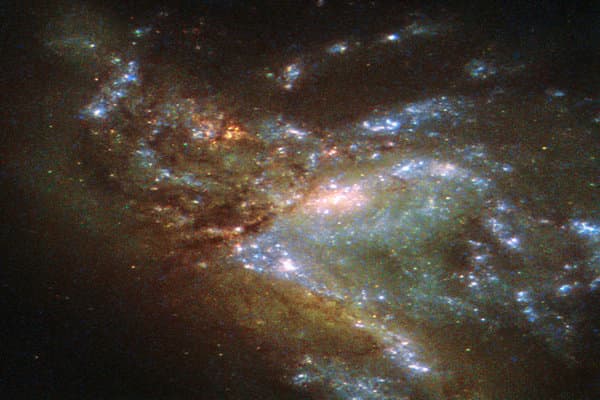Hubble captures the incredible sight of two galaxies merging together for the first time
The image shown below was captured by the Wide Field Planetary Camera 2(WFPC2), which has continued to be the workhorse camera of the Hubble Space Telescope for a long time. To a layman, the image would seem to be that of a single abnormal galaxy, and indeed it was originally classified as exactly that. But recently the European Space Agency (ESA) in collaboration with the National Aeronautics and Space Administration (NASA) research group discovered that the galaxy under consideration, named as the NGC 6052, is actually the result of two different galaxies which are in the process of coalescing together. It is located 230 million light-years away, in the constellation of Hercules.

NGC 6052: Image credit ESA/Hubble & NASA, Judy Schmidt
Understandably, the NGC 6052 with its abnormally chaotic structure has been the subject of intense study ever since its discovery. However the recent findings prove that two different galaxies were attracted towards each other by gravity's strong pull , which led them to collide with each other, and are now merging together to form a new galaxy.
As the fusion process continues, the conventional paths of the stars are altered, and some are placed in orbit, very far away from the region of collision. The research team stated that the drastic change in their paths might produce a significant impact on the surroundings. Since the stars emit the light we see, the new galaxy bears a very chaotic structure. However, after the cosmic merging process gets over, the new galaxy is likely to settle into a stable shape which may not resemble either of the parent galaxies.
Source: #-Link-Snipped-#

NGC 6052: Image credit ESA/Hubble & NASA, Judy Schmidt
Understandably, the NGC 6052 with its abnormally chaotic structure has been the subject of intense study ever since its discovery. However the recent findings prove that two different galaxies were attracted towards each other by gravity's strong pull , which led them to collide with each other, and are now merging together to form a new galaxy.
As the fusion process continues, the conventional paths of the stars are altered, and some are placed in orbit, very far away from the region of collision. The research team stated that the drastic change in their paths might produce a significant impact on the surroundings. Since the stars emit the light we see, the new galaxy bears a very chaotic structure. However, after the cosmic merging process gets over, the new galaxy is likely to settle into a stable shape which may not resemble either of the parent galaxies.
Source: #-Link-Snipped-#
0

